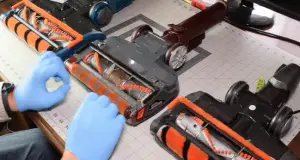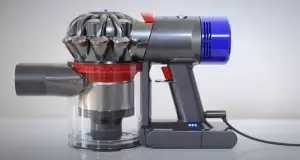There is no substitute for cleaning to maintain the hygiene of the home. A cleaner with a good vacuum suction is enough to make this task easier. To find the perfect and high-power vacuum device for you from so many options, you must know how to calculate vacuum suction force.
When you have an efficient and fast vacuum, there is no point in cleaning the house in a typical way. But buying a vacuum cleaner will not going to be easy. It is important to choose a vacuum with a strong suction according to your needs. To do this tricky job successfully you need to know how to calculate vacuum suction. So keep reading this article to know the effective ways to calculate vacuum suction.
How to Calculate Vacuum Suction Force
The main liability of a good-quality vacuum device is to clean all kinds of debris by sucking. Dust sucking requires a lot of pressure on the motor inside the cleaner and sucking that debris. This force of sucking is called the suction of that vacuum cleaner. Therefore, before purchasing a vacuum cleaner, you must be sure to calculate the suction force. Here we are highlighting the ways to calculate the suction force of any vacuum cleaner. Let’s see them.
Cubic Feet per Minuit or Airflow
Cubic feet per minute or CFM is a widely known way of calculating airflow. Moreover, there is a deep relationship between the calculations of the suction power of airflow. CFM means how many cubic feet of air can be replaced per minute in a vacuum. Basically, it determines the method of carrying dirt. It is natural that the higher the value of CFM in a vacuum, the higher the suction power.
Normally, CFM is zero when closed but up to a maximum of 2 inches when opened. However, the CFM should increase as the size of the air opening develops. So the better the CFM of a vacuum, the better it can clean. However, a vacuum of 100 CFM or more is considered a good suction.
Pascal
Vacuum force calculation is a good way to do in terms of Pascal. Because massive suction energy is required to produce pressure. And you must know that Pascal is equal to 1 Newton ball per unit square meter.
In an ideal vacuum device, the standard pressure capacity is 20 kilopascals. This means that the suction of a decent-class vacuum cleaner is equal to nearly 2 tons of energy per square meter. So choose a Pascal unit to quantify the force of a vacuum as it is capable of measuring internal pressure and stress.
Water Lift
Another name for water lift is seal suction which is an old experiment method. All you have to do to test this is to attach a tube to the water-filled container. If you see that the water is rising at a high rate after connecting the tube, you will understand that the vacuum suction is of good quality. Although sometimes this test is not suitable for all vacuum devices.
Since there are many modern and different design vacuum machines in the market that do not support this classic test. There is no way to acknowledge this test is still very effective in testing the vacuum suction force or power. Therefore, if the water level is greater than or equal to 90 inches, that vacuum suction is more powerful.
Watts
If you want to measure your vacuum suction force you can go with Watt Count. Because it is currently an acceptable and easy way to calculate vacuum suction force. The standard range of watts in a vacuum ranges from about 40 to 2500 watts. Note that vacuum suction power watts are completely different from whole vacuum power watts.
Suppose, the total vacuum power in a device is 1600 watts, but the suction from that power occupies about 360 watts and this power is enough for good suction. Now the question is where the rest of the energy goes or is spent? In a word, the answer would be the remaining wattages for other units of the machine.
Amps
Currently, amps are the most commonly used technique for calculating vacuum suction force which is comparable to wattage in that it varies from vacuum suction energy intake. In the case of suction of a good quality vacuum cleaner, the decent range of Amps should be around 4-12 amps.
However, you can convert watts from amps if you want. For this, you will just apply a simple formula. The formula: amps * 120 volts = watts. Remember that the volts in the United States are 120. Based on this formula, you can confirm the measurement of vacuum suction power.
What Factors Impact the Vacuum Suction Force?
Some factors influence the suction force of a good vacuum cleaner. Here, we are highlighting them.
- The first thing is that if there is no proper filter in a vacuum, it will reduce the suction power of that cleaner.
- Needless to say, regular cleaning of the dirt will increase the suction power and the cleaner will give you better service for a long time.
- In addition, extension designs can affect the suction power especially the hose or nozzle. Along with that, a full dust bag can also reduce the vacuum suction force and turn off the device at any time. So always keep the dust bag clean.
- A motor is the main tool to produce suction power. Now if this motor is made of poor design then surely it will also deprive you of good vacuum suction force.
- At the same time, if the gap between the surface, the carpet, and the vacuum increases, the suction force will decrease. So keep the vacuum machine as close to the surface as possible while cleaning the dirt.
Conclusion
Finding a vacuum cleaner with a strong suction can be a daunting task. But now you can since you are aware of the reasons behind it. So if you want to get a good suction power vacuum cleaner read the above details carefully. Finally, when you go to buy a new vacuum cleaner, sort out your demands and needs.




